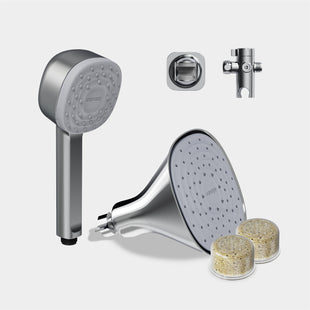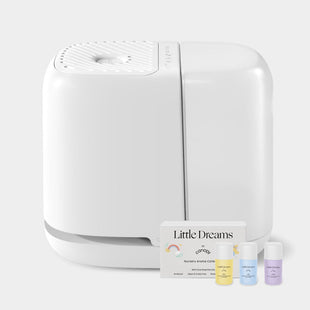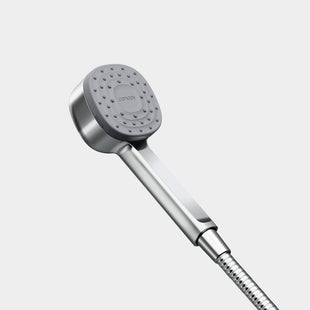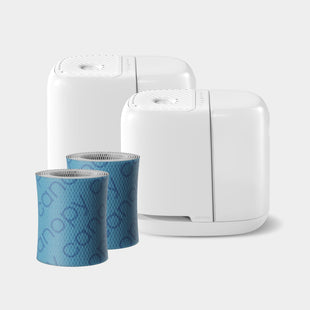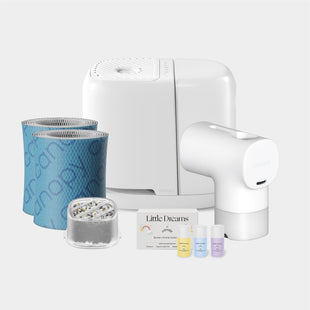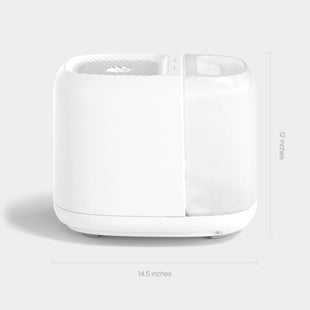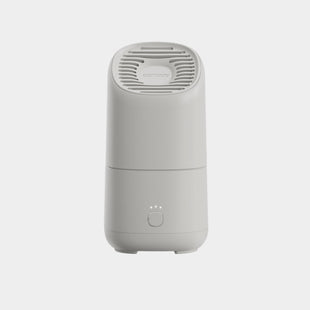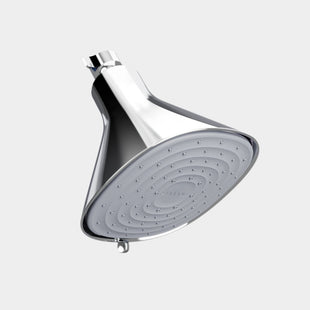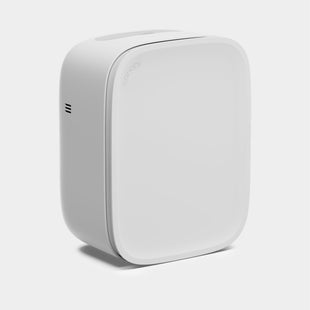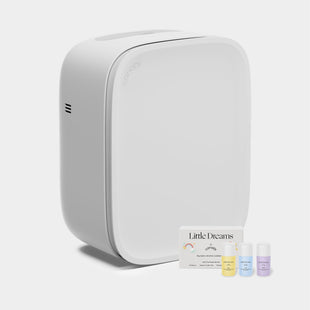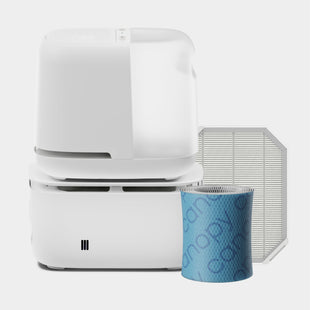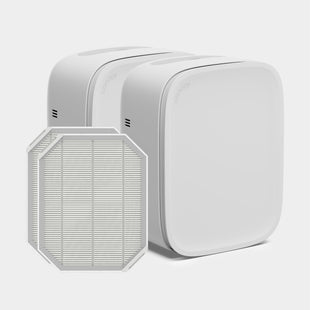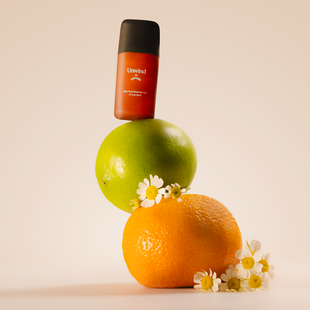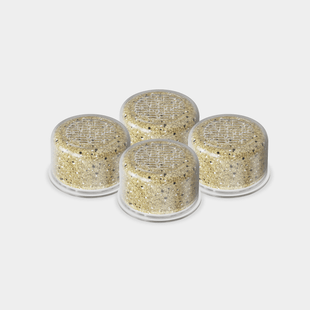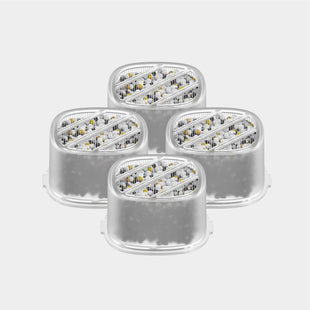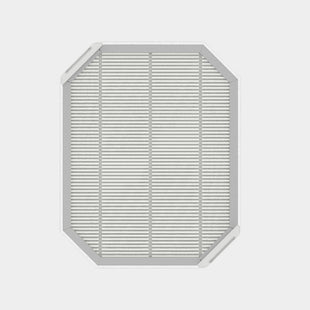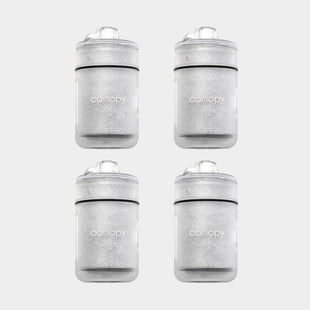This content has been reviewed and updated on February 23, 2024.
As a parent, you do everything you can to keep your baby healthy. Still, it’s impossible to avoid the sniffles forever. While congestion in babies typically isn’t a cause for alarm, it can lead to long, restless nights—for both you and your baby. Fortunately, there are steps you can take to ease a congested baby and help them feel better again.
What Are the Signs of Congestion in Babies?
Many symptoms of congestion in babies are similar to adults, but since your little one doesn’t have the words to tell you how they’re feeling just yet, you may have to make some observations to see what’s going on. There are two types of congestion: nasal and chest.
Nasal Congestion in Babies
Nasal congestion is common in newborns, and is frequently of little to no concern. While it’s irritating to your baby, it’s not detrimental to their health. Your newborn may experience congestion frequently during their first few months of life until they learn to breathe through their mouth.
Typically, signs of nasal congestion are mild. If your child is feeding regularly and exhibiting normal behaviors, they may have a slight case of nasal congestion.
Common symptoms of nasal congestion in babies include:
- Slight sniffling
- Light coughing
- Frequent sneezing
- Snoring
- Noisy breathing
If your little one is producing nasal mucus, take note of the color. While clear, white, or light-yellow snot is generally no cause for concern, green or bright yellow could indicate a sinus infection. As always, consult with your pediatrician if you’re unsure about a certain symptom.
Chest Congestion in Babies

Chest congestion is less common than nasal congestion in newborns, but it does warrant immediate care. In babies, chest congestion is a sign of fluid in the lungs. It could be a sign of conditions ranging from the flu to bronchitis, as well as more serious issues like pneumonia. However, pediatric care units are well-equipped to handle these conditions, which is why your child’s doctor is the best resource for handling chest congestion.
Here are some symptoms to bear in mind as an extra precaution:
- Wheezing
- Frequent coughing
- Rapid breathing
- Refusal to eat during a regular feeding
If your baby is exhibiting any of these symptoms, call their doctor immediately.
What Causes Congestion in Babies?
There are several common causes of congestion in babies. Here’s a closer look at each.
Amniotic Fluid
Remnant amniotic fluid can clog your baby’s airway, leading to frustrating nasal congestion. By week 10 of your pregnancy, babies start taking “practice” breaths in the womb. This normal developmental activity fills their airways and lungs with amniotic fluid rather than oxygen, which is supplied by the umbilical cord.
When your baby is born, some amniotic fluid may remain in their nasal cavity, clogging their airway and causing congestion.
Small Airways
Small noses mean small airways. Your baby has such tiny airways that microscopic, external irritants can inflame the mucus membranes in their nasal cavity, which happens much more frequently when you have small airways.
As your baby develops, their airways will continue to increase, reducing sensitivity over time.
External Irritants
Babies and small children exhibit higher sensitivity to external irritants, including pet dander, dust, mold, airborne viruses, and pollen, among others.
If your home has higher levels of irritants, this may trigger inflammation in the mucus membranes, which causes congestion in your little one.
A Cold or Flu
While there are plenty of causes for congestion in babies that aren’t viruses, an illness is one possibility to consider. Cold and flu viruses are particularly prominent during the winter months when humidity levels are low, temperatures drop to freezing, and more people head indoors, where germs can spread.
The dry, chilly air of the winter can increase your baby’s chances of catching a cold or the flu. In addition, the dehydrated, recycled heat blasting from your home furnace can cause congestion that just won’t quit.
Now for the good news: there are several steps you can take to help your congested baby feel better.
4 Ways to Relieve Congestion in Babies
Nasal congestion rarely requires a visit to your pediatrician’s office. In fact, there are plenty of home remedies for a congested baby that can dramatically improve their symptoms. Here’s how to relieve congestion in babies experiencing nasal symptoms like a stuffy nose or sneezing.
1. Administer Saline Drops
Saline drops can help to loosen dried mucus in your baby’s nose and create a clear pathway for easy breathing. Make sure to consult your pediatrician for saline product recommendations; it’s always best to get a doctor's approval before introducing any medicated solutions to your child.
2. Use a Nasal Aspirator
A nasal aspirator is an important tool to keep in your baby’s first aid kit. You can use a traditional suction bulb (these are usually provided at the hospital after you’ve had your baby) or you can explore updated versions of this device. Either way, they both execute the not-so-pleasant but necessary task of removing buildup from your baby’s nose.
Whether you choose the old-school bulb or the new-age aspirator, make sure to read the instructions carefully before using your device. And consider combining methods: nasal aspirators tend to work best after mucus is already loosened, so try using one after you’ve administered some saline drops.
3. Sit in a Steamy Bathroom
Steam is a powerful tool for combating congestion in people of all ages, and babies are no exception.
Turn on the shower in your bathroom to the highest setting. Close the bathroom door and sit down with your baby directly next to the shower for 10 to 20 minutes. The steam from the shower will lubricate their nasal passage and release trapped mucus.
4. Run a Humidifier
For a longer-lasting solution, consider running a humidifier in your baby’s room. When placed near your little one’s crib, this powerful device can replace the moisture in the air to promote a restful sleep.
How Humidifiers Help Congestion in Babies

A humidifier can improve your overall health when used regularly. Humidifiers can reduce congestion, improve a dry or sore throat, alleviate dry skin and chapped lips, kill viruses, and more.
Low or insufficient humidity levels and fluctuating temperatures can trigger swelling of the membranes in your baby’s nose. Since infants already have a tiny airway, this swelling sounds an awful lot like congestion.
Optimal humidity levels for your home sit between 40% and 60% relative humidity (RH). You can use a hygrometer or your smart thermostat to monitor humidity levels in your home. Choosing the right humidifier is of utmost importance.
Which Is the Best Humidifier for Your Baby?
There are three major factors to consider when finding the best humidifier for your baby: cool mist vs. warm mist, ease of maintenance, and noise levels.
Cool Mist
Cool mist humidifiers are recommended by pediatricians for use in your baby’s nursery. While warm mist is healthy if your humidifier is cleaned properly, vaporizers or warm mist humidifiers can be a little too hot for the room.
The safest humidifier for your child is a cool-mist, evaporative humidifier. Canopy’s anti-microbial filter catches bacteria and metals and uses a no-mist technology to produce invisible, clean moisture.
Simple Maintenance
Properly caring for and cleaning your humidifier will prevent your device from growing mold or harboring harmful bacteria. Your humidifier will require proper cleaning and daily wipe-downs to operate safely and efficiently.
Finding a humidifier with simple maintenance requirements is essential. Canopy is not only easy to break down but is even easier to clean: simply toss Canopy’s parts in the dishwasher and you’re ready for continued hassle-free hydration. And with our Nursery Humidifier Bundle, you can subscribe to filter replacements, eliminating one more thing from the busy new-parent to-do list.
Soothing Sound
Some humidifier devices have a calm “shushing” sound that can lull your lovebug into a restful sleep. Other devices are loud and may interfere with your baby’s sleep cycles.
As any new or seasoned parent can attest, messing with sleep is one thing you don’t want to do.
When choosing the best humidifier for your baby, look for a device like Canopy’s Nursery Humidifier that sounds like a white noise machine. To engage their senses even further, consider the Little Dreams aroma kit, which provides soothing bedtime scents like lavender alongside soothing hydration.

